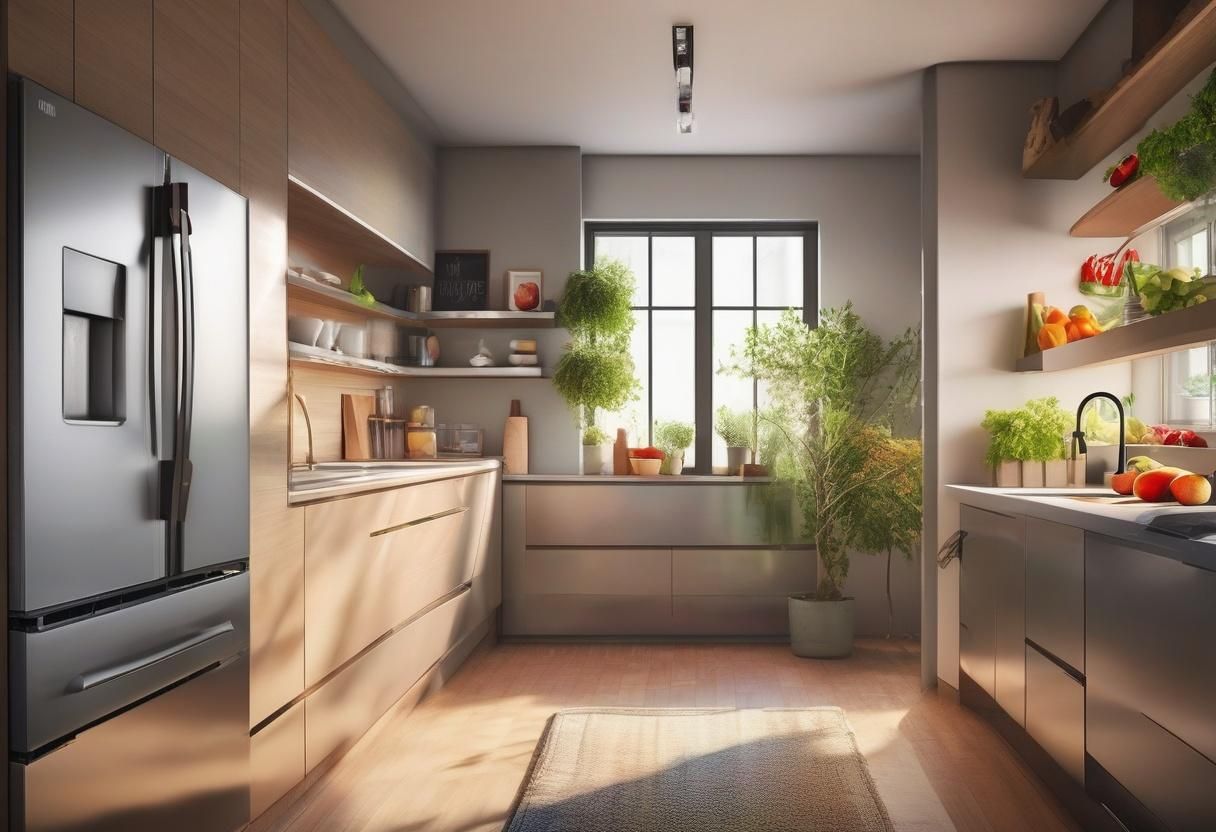What is a fridge: Your ultimate guide to refrigerator functions

What is a fridge
A fridge, short for refrigerator, is an essential household appliance designed to keep food and beverages cool and fresh. It maintains a low temperature, typically between 32°F (0°C) and 40°F (4°C), which slows down the growth of bacteria and spoiling of food. Most refrigerators operate using a refrigeration cycle that involves the compression of refrigerant gases and heat exchange.
Refrigerators come in various types including top-freezer, bottom-freezer, side-by-side, and French-door models, making them versatile for different kitchen spaces and requirements. Understanding how a fridge works helps us utilize it efficiently to extend the lifespan of our food.
How Fridges Work
The refrigeration process is centered on four main components: the compressor, condenser, expansion valve, and evaporator. The compressor compresses the refrigerant gas, raising its temperature and pressure. This hot gas then moves through the condenser coils located at the back or underneath the fridge, where it releases heat and cools down, turning into a liquid.
This liquid then passes through the expansion valve, dropping in pressure and temperature as it enters the evaporator coils inside the fridge. As the refrigerant evaporates, it absorbs heat from the inside, effectively lowering the temperature inside the fridge before returning to the compressor to repeat the cycle. This continuous process maintains the cool environment necessary for preserving food.
Types of Fridges
- Top-Freezer Refrigerators: These models feature a freezer compartment above the main refrigerator section, providing easy access to frequently used items.
- Bottom-Freezer Refrigerators: With the freezer at the bottom, these fridges typically offer more accessible storage for fresh groceries at eye level.
- Side-by-Side Refrigerators: Featuring two vertical compartments, one for freezing and one for refrigeration, these units allow for easy organization and access.
- French-Door Refrigerators: Combining the benefits of side-by-side and bottom-freezer designs, these provide ample storage space and sleek aesthetics.
Benefits of Using a Fridge
Using a fridge comes with numerous benefits including:
- Food Safety: Keeps perishable food items safe from spoilage.
- Freshness: Maintain the taste and texture of food by storing it at ideal temperatures.
- Convenience: Reduces the frequency of shopping trips by allowing bulk purchases and storage.
Common Questions About Fridges
Many people have inquiries about their refrigerators and how to maximize their efficiency. Here are a few common questions:
- How long do scallops last in the fridge?
- How long does queso last in the fridge?
- How long does mozzarella last in the fridge?
- How long does sushi last in the fridge?
Fridge Maintenance Tips
- Cleaning: Regularly clean the interior and exterior to keep it odor-free and functionally efficient.
- Temperature Monitoring: Set the thermostat correctly and check it with a thermometer occasionally.
- Organization: Store food in an organized manner to avoid overcrowding and ensure proper air circulation.
If you have any more questions regarding your fridge or its functions, don’t hesitate to ask!





